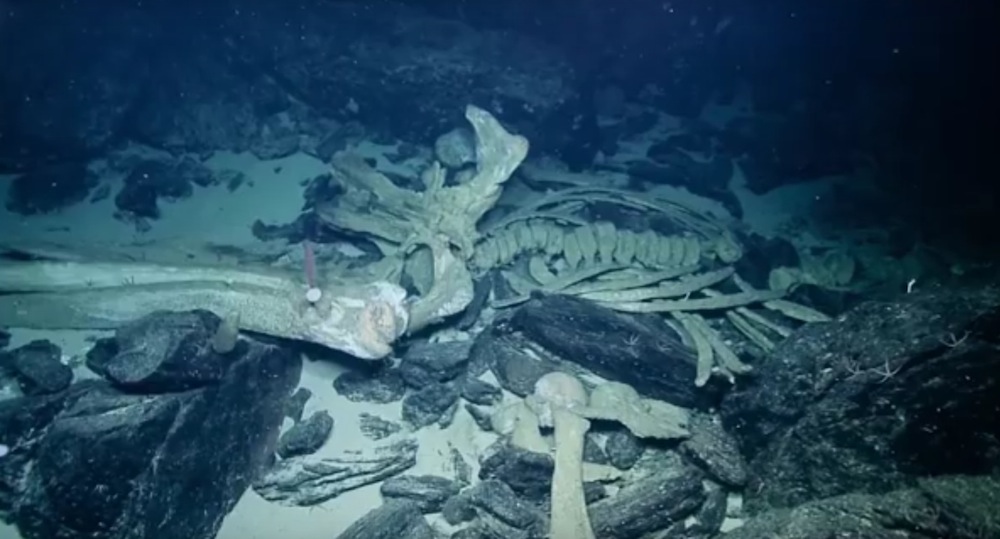Rare 'Whale Fall' Spotted by Deep-Sea Scientists

A rare sight was recently captured by scientists aboard a deep-sea exploration vessel: the skeleton of a fallen whale. Researchers say these bony remains provide a feast of nutrients for sea creatures, including bone-eating "zombie worms."
Newly released video footage from the Exploration Vessel Nautilus shows the whale bones on the seafloor, in what researchers term a natural "whale fall."
"Coming across a natural whale fall is pretty uncommon," a Nautilus researcher said in the video. "Most of the ones that have been studied have been sunk intentionally at a certain spot." [Extreme Life on Earth: 8 Bizarre Creatures]
The ecological impacts of a whale fall are far-reaching. According to the National Oceanic and Atmospheric Administration (NOAA), whale carcasses provide a "sudden, concentrated food source and a bonanza for organisms in the deep sea." Scavengers arrive on the scene first, consuming the soft tissue over the course of a few months, and the remaining detritus can enrich the ocean floor sediment for more than a year, NOAA said.
The whale skeleton itself is also a rich supplier of resources — particularly for a type of parasitic creature often referred to as zombie worms (Osedax roseus) because they feast on the dead.
"They burrow down into the bone and digest the lipids," a Nautlius researcher said in the video.
According to the Smithsonian National Museum of Natural History, the species was discovered feasting on a rotting gray whale carcass in 2002. In what could be considered an evolutionary hack to avoid searching for a mate, only female worms perform the necessary drilling to get to the fat within the bones.
Sign up for the Live Science daily newsletter now
Get the world’s most fascinating discoveries delivered straight to your inbox.
"The males live inside the females — sometimes 100 males to one female," Nautilus researchers said.
Skeletons from whale falls also serve as a hard substrate for invertebrate colonization. "It almost looks like a type of anemone," the Nautlius researchers said, while observing a mysterious white orb on the whale's jawbone.
Upon further inspection, though, the scientists said the orb was likely a coral making use of the surface.
Based on the shape of the whale jaw, the researchers speculated it was a baleen species, and could have been a juvenile, based on its relatively small size.
The new footage offers insights into the fate of a peculiar object that was spotted recently by an Australian fisherman. The strange, floating object turned out to be a bloated whale carcass, which scientists say will eventually result in a whale fall after it deflates and sinks to the seafloor.
The Exploration Vessel Nautilus, a 210-foot-long (64 meters) research vessel operated by the Ocean Exploration Trust, is investigating the Southern California continental margin from July 24 to Aug. 12.
Original article on Live Science.












